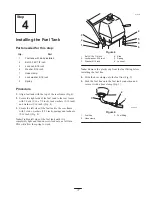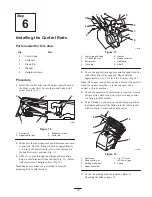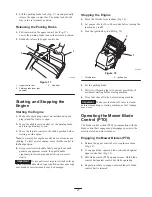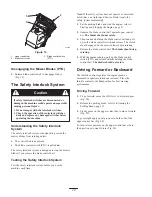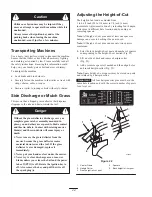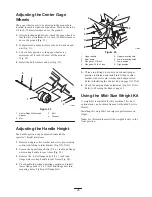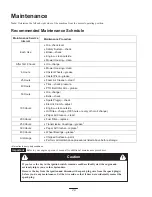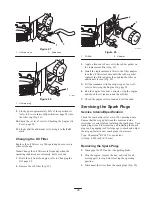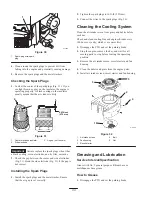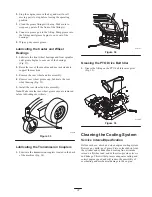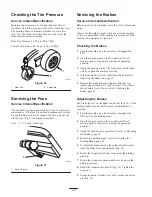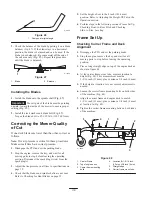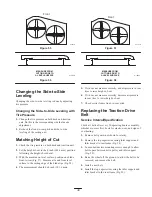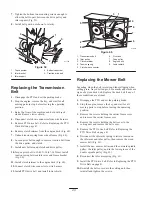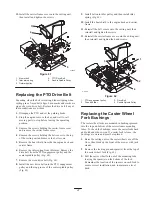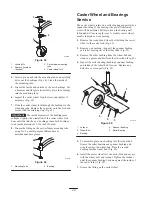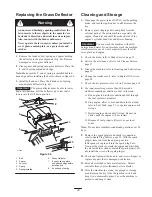
28
Installing the Foam and Paper Elements
Important
To prevent engine damage, always operate
the engine with the complete foam and paper air cleaner
assembly installed.
1. Carefully slide the foam element onto the paper air
cleaner element (Fig. 25).
2. Place the air cleaner assembly onto the air cleaner base
and secure it with the nut (Fig. 25).
3. Place the air cleaner cover into position and tighten the
cover knob (Fig. 25).
Servicing the Engine Oil
Service Interval/Specification
Change the engine oil:
•
After the first 8 operating hours
•
After every 100 operating hours
Note: Change the oil more frequently when the operating
conditions are extremely dusty or sandy.
Oil Type: Detergent oil (API service SF, SG, SH, or SJ)
Crankcase Capacity: 58 ounces (1.7 liter) with the filter
removed; 51 ounces (1.5 liter) without the filter removed
Viscosity: Refer to the table below
USE THESE SAE VISCOSITY OILS
Checking the Engine Oil Level
1. Park the machine on a level surface.
2. Disengage the PTO and set the parking brake.
3. Stop the engine, remove the key, and wait for all
moving parts to stop before leaving the operating
position.
4. Clean around the oil dipstick (Fig. 26) so that dirt
cannot fall into the filler hole and damage the engine.
m–7449
2
1
Figure 26
1.
Oil dipstick
2.
Filler tube
5. Unscrew the oil dipstick and wipe the end clean
(Fig. 26).
6. Slide the oil dipstick fully into the filler tube, but do
not thread onto tube (Fig. 26).
7. Pull the dipstick out and look at the end. If the oil
level is low, slowly pour only enough oil into the filler
tube to raise the level to the Full mark.
Important
Do not overfill the crankcase with oil and
run the engine; engine damage can result.
Changing the Oil
1. Start the engine and let it run five minutes. This warms
the oil so it drains better.
2. Park the machine so that the drain side is slightly
lower than the opposite side to assure the oil drains
completely.
3. Disengage the PTO and set the parking brake.
4. Stop the engine, remove the key, and wait for all
moving parts to stop before leaving the operating
position.
5. Slide the drain hose over the oil drain valve.
6. Place a pan below the drain hose. Rotate oil drain
valve to allow oil to drain (Fig. 28).
7. When oil has drained completely, close the drain
valve.
8. Remove the drain hose (Fig. 28).
Note: Dispose of the used oil at a recycling center.




